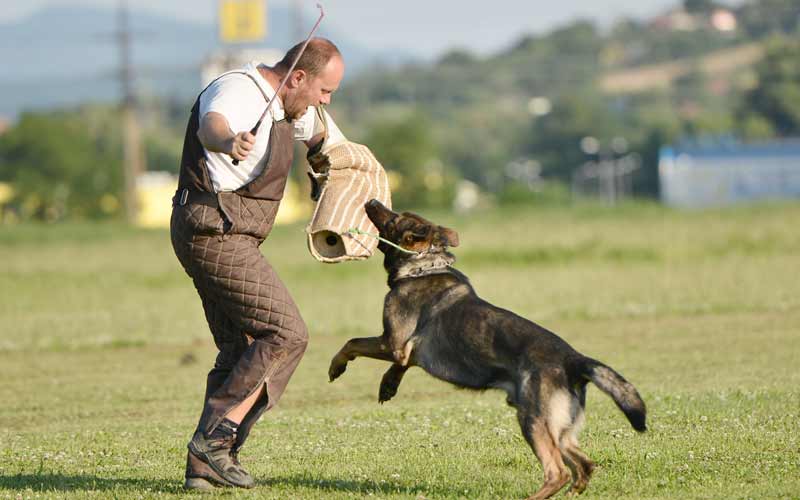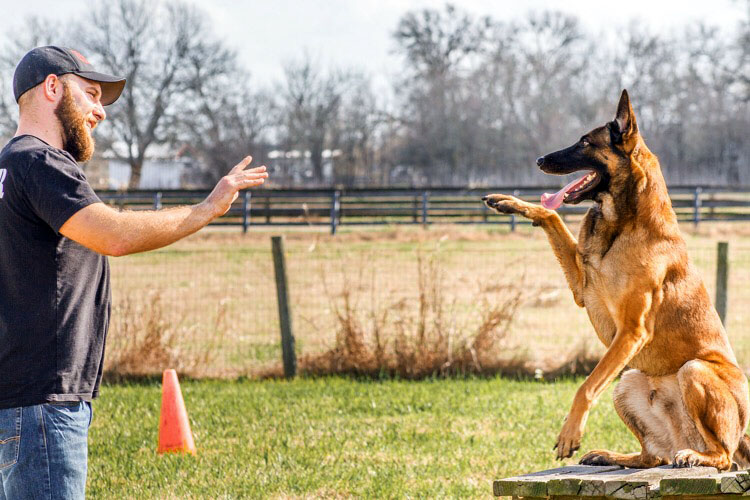The Ultimate Guide to Positive Support in Dog Training
The Ultimate Guide to Positive Support in Dog Training
Blog Article
Necessary Tips for Successful Dog Training: A Guide for Pet Dog Owners
Efficient pet training is a multifaceted process that calls for a strategic technique tailored to both the pet dog's character and the owner's purposes. Comprehending exactly how to navigate these challenges can substantially improve the training experience, eventually changing the connection in between proprietor and dog.
Understanding Canine Habits
Understanding pet actions is important for reliable training and fostering an unified partnership between canines and their owners. Dogs connect largely via body language, articulations, and activities, making it vital for owners to interpret these signals properly. Identifying a canine's posture, tail placement, and ear orientation can give insights right into its emotional state. For instance, a wagging tail does not always show happiness; it can also signal exhilaration or anxiety.

Socialization plays a substantial duty in canine actions; direct exposure to different environments, people, and various other pets can dramatically affect a pet's character. Furthermore, variables such as type qualities and individual character should assist training methods, as some types might have certain behavioral characteristics that require customized approaches. By understanding these components, proprietors can produce a helpful environment that motivates positive habits, resulting in successful training end results and a deeper bond with their animals.
Developing Consistent Commands
Reliable communication with your pet dog begins with developing constant commands. This fundamental aspect of training is important for cultivating understanding in between you and your family pet. Uniformity in the commands you make use of guarantees that your pet dog can reliably connect details words or phrases with the wanted habits.
When picking commands, select clear, unique words that are easy to distinguish and state from each other. Stay clear of utilizing similar-sounding commands that may confuse your pet. For instance, using "rest" and "remain" is appropriate, however "sit" and "struck" might result in misconceptions.
Furthermore, maintain the exact same tone and volume for each command. Pet dogs are sensitive to vocal hints, so differing your tone can develop complication.
It is equally crucial to guarantee that all household members are on the very same page relating to the commands made use of. A united front in command use will stop mixed signals and reinforce the discovering process.
Positive Support Strategies
The power of favorable reinforcement in pet training depends on its ability to urge desired behaviors via rewards and praise. This method is based in the principle that habits adhered to by desirable end results are most likely to be repeated. By integrating favorable support into your training program, you can effectively form your canine's actions in a constructive fashion.
To apply favorable support, it's vital to identify what motivates your pet dog, whether it be treats, toys, or verbal appreciation. When your pet executes a desired action, such as remaining on command, promptly award them with a reward or love. This organization between the command and the favorable outcome strengthens their understanding.
It's crucial to timing the incentives appropriately; supplying the support within seconds of the preferred actions assists your pet make the link (dog training). In addition, consistency is key-- ensure that all member of the family use the exact same commands and benefit systems to avoid confusion

Slowly, you can minimize the regularity of deals with as your dog learns the actions, transitioning to commend or recurring rewards. This approach not only fosters a strong bond in between you and your dog however likewise advertises a favorable knowing setting, making training a pleasurable experience for both.
Socialization and Interaction
Continually subjecting your pet dog to a selection of atmospheres, people, and other pets is vital for their social growth. Socializing must begin early, preferably throughout the essential window of 3 to 14 weeks, when young puppies are most responsive to brand-new experiences. However, older pets can additionally profit from ongoing socializing efforts.
Introduce your dog to different setups, such as parks, pet-friendly stores, and metropolitan locations. This exposure aids them adapt to different stimulations, lowering stress and anxiety and anxiety reactions. Motivate positive communications with various other canines and people, ensuring that these encounters are risk-free and controlled to promote confidence.
Use structured playdates with courteous canines, as this can enhance your pet dog's social skills and teach them appropriate actions. Obedience classes and training sessions likewise give exceptional opportunities for socialization, enabling your pet to connect with others in a supervised atmosphere.
Monitor your dog's body language during communications, as this will certainly help you evaluate their convenience degree. Slowly enhance exposure to more tough circumstances while making sure that each experience declares. A well-socialized dog is more probable to show well balanced habits, making them a joy to have in any type of setting.
Addressing Typical Training Challenges
Every canine proprietor will experience training challenges eventually, no matter of their pet dog's age or socializing level. Identifying usual issues such as stubbornness, distractions, and fearfulness can aid in establishing effective approaches browse around here for improvement.

Interruptions throughout training sessions can thwart emphasis. To combat this, start training in a peaceful environment with very little stimulations. Progressively introduce interruptions as the pet comes to be extra proficient in commands. Short, constant training sessions are also effective in maintaining attention.
Fearfulness can prevent a canine's knowing process. Gradual desensitization to the source of fear, matched with positive reinforcement, can aid relieve anxiousness. Patience is vital; never require a canine right into a circumstance that causes distress, as this might worsen the problem.
Eventually, understanding and attending to these typical challenges with an organized approach will certainly cultivate a much more effective training experience, strengthening the bond in between dog and proprietor while advertising efficient learning.
Final Thought
In summary, effective pet dog training depends on a comprehensive understanding of canine habits, the facility of regular commands, and the application of favorable reinforcement techniques. Socialization plays a critical function in developing well-adjusted pets, while addressing typical training difficulties calls for patience and adaptability. By executing these crucial methods, family pet owners can promote a solid bond with their pet dogs and promote preferable habits, eventually bring about a harmonious connection in between human beings and their canine friends.
Comprehending pet dog behavior is crucial for reliable training and promoting an unified connection between dogs and their proprietors.Socialization plays a considerable function in pet dog actions; exposure to various environments, people, and various other animals can significantly influence a pet dog's character.The power of favorable reinforcement in canine training lies in its ability to urge desired habits with benefits and appreciation. By incorporating favorable support right into your training program, you can this website efficiently form your dog's habits in a positive manner.
In summary, successful dog training relies on a her comment is here thorough understanding of canine habits, the facility of consistent commands, and the application of favorable reinforcement strategies.
Report this page